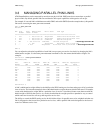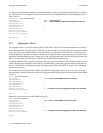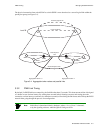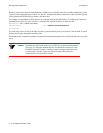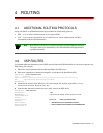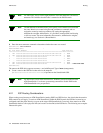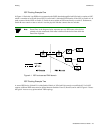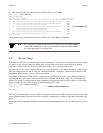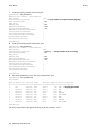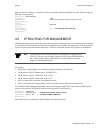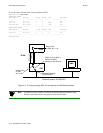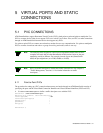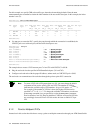
SmartSwitch ATM User Guide 4-5
Routing UNI Routes
4.3 UNI ROUTES
Use the add atmroute command to create UNI routes. For example, connect an end station adapter (with MAC address
00:11:22:33:44:55) to port
7A2 of a SmartSwitch 6500. If the adapter does not support ILMI or its ILMI is incompatible
with the SmartSwitch 6500, you must create a static UNI route between the adapter and port
7A2 of the SmartSwitch
6500.
The following example works with any ATM SmartSwitch, however, the port numbering may be different (for instance
A2 instead of 7A2):
1. Enter the show netprefix command to obtain the netprefix of port 7A2:
SmartSwitch # show netprefix
PortNumber(ALL) : 7a2
Port# NetPrefix
============================================================================
7A2 39:00:00:00:00:00:00:00:00:00:14:59:00
SmartSwitch #
2. Reconfigure the adapter with an ATM address made from the netprefix of port 7A2 and the adapter’s
MAC address: 39:00:00:00:00:00:00:00:00:00:14:59:00:00:11:22:33:44:55:00.
3. Use the add atmroute command to create a static UNI route that specifies port 7A2 and the adapter’s
new ATM address.
SmartSwitch # add atmroute
PortNumber() : 7a2
AtmAddress() : 39:00:00:00:00:00:00:00:00:00:14:59:00:00:11:22:33:44:55:00
PrefixLength(152) :
Index(0) :
Type(Internal) :
— Take the default to make this an “internal” route
Scope(0) :
MetricsTag(0) :
— See Section 4.4 for information on metrics
Advertising(NO) :yes
— Advertise this address into the PNNI domain
SmartSwitch #
Note Always set the Type parameter of the add atmroute command to internal (the
default) for UNI routes. This indicates that the route is internal to the PNNI
domain.
Note The add atmroute command allows you to specify a set of metrics to be used with
the route. Metrics are created using the
add pnnimetric command, and are
assigned to routes by metric tag numbers. By setting the appropriate
administrative weights within metrics, it’s possible to create parallel load-sharing
or fail-over routes. For more information about metrics, administrative weights,
and metric tags, see Section 4.4, Route Metrics.



